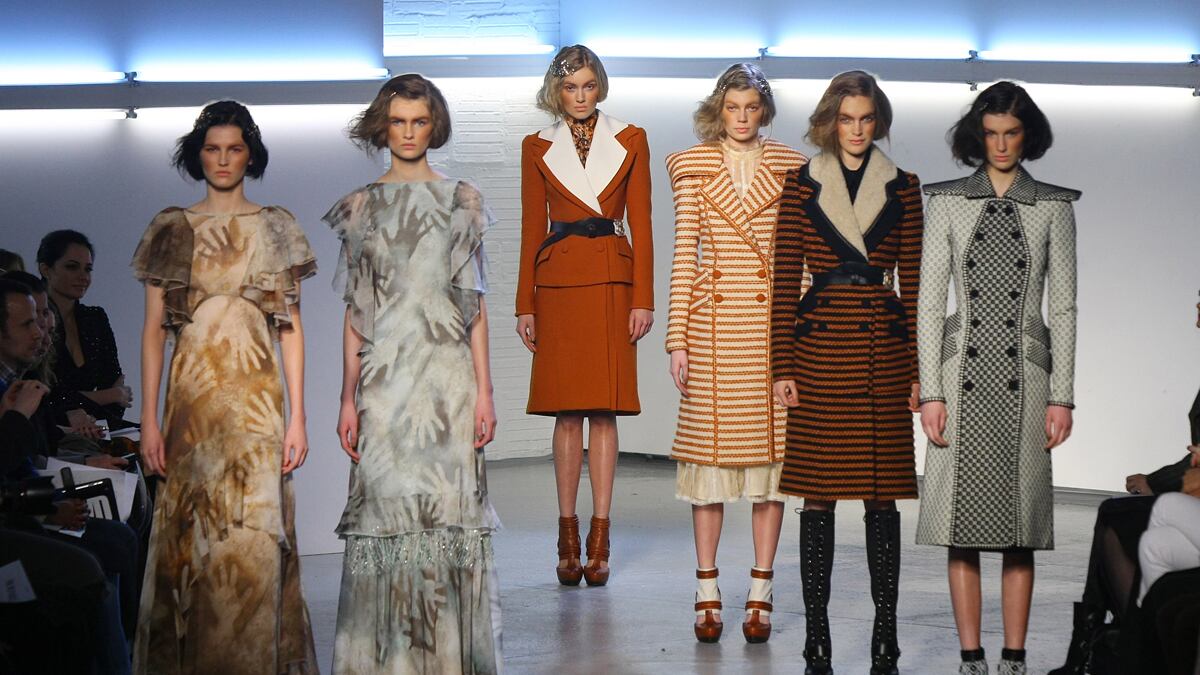
In the last decade, the New York fashion industry saw an explosion of young designers with significant potential. But in the past few seasons, a lot of the excitement surrounding that next generation has fizzled. Their edge has dulled. The freshness has worn off. The tough realities of the fashion business have set in.
But the two sisters behind the Rodarte label are the rare young designers who continue to surprise and dazzle. They did just that with a fall 2012 collection inspired by Australia.
Most of those in the much ballyhooed group of new American womenswear designers were young men intent on dressing the next generation of socialites or the next batch of night crawlers. Some of those young men lost their way, unable to settle on a point of view that defined their aesthetic. Others have quietly built nice businesses by creating pleasantly contemporary clothes while leaving inventiveness and excitement to others. And a few seem to have aged prematurely, creating desultory collections that seem suited for women who view the starched style of Callista Gingrich as worth aspiring to.
But Kate and Laura Mulleavy, self-taught sisters from California, always stood apart. They were obsessed with the techniques of design, but not flamboyant in their use of them. Their work was feminine but not precious, tough but without hard edges. And they were not boring realists looking to dress women for their offices, grocery store trips or soccer coach duties. At times, their work has been positively inscrutable and wholly impractical. And they’ve had no problem putting their young models up on treacherous heels and commanding them to walk with confidence—a tactic that should really not be applauded.
Their shows in Chelsea attract American editors and European ones as well, art gallery owners like Jeanne Greenberg Rohatyn, fashion historians such as Valerie Steele, and U.S. representatives for the French fashion emporium Le Bon Marche. And the collection for fall underscored how, even as they have matured as technically savvy and restrained designers—even commercial ones—their work has not lost its iconoclastic passion and its artistic eccentricity.
Wool lace blouses with dolman sleeves topped slim matching skirts in shades of pea green and mauve. Urban shearling coats were worn with silk dresses printed with patterns inspired by aboriginal art. Slim cargo pants were matched with cropped fisherman’s sweaters that were thick and almost masculine in cut. Cocktail dresses were suspended from a jeweled strap. Evening gowns were constructed from tiers of ruffles and called to mind carve totem poles.
Patterns referenced aboriginal art; hand prints were inspired by ancient cave paintings. And instead of putting models in daunting and fragile stilettos, the designers had them wear chunky shoes with heels that looked like cantilevered, mechanical sculptures, and boots that were embroidered with beads in the manner of an Indian medallion.
The inspiration “came out of nowhere,” explained Laura Mulleavy in the crush of well-wishers after the show. “We’d done so much research and looked at photo books of different eras.” But they kept coming back to the idea of Australia—along with the Victorian era, which inspired the hairstyles and some of the simple and reserved silhouettes.
“The show was based on the rugged outback,” added Kate Mulleavy.
Despite being obsessed with Australia, Kate said, the sisters have never been. But no matter their limited geography. Their collection served as proof that sometimes a vivid imagination and hard work are enough to live up to industry hype, critical success and one’s own potential.






